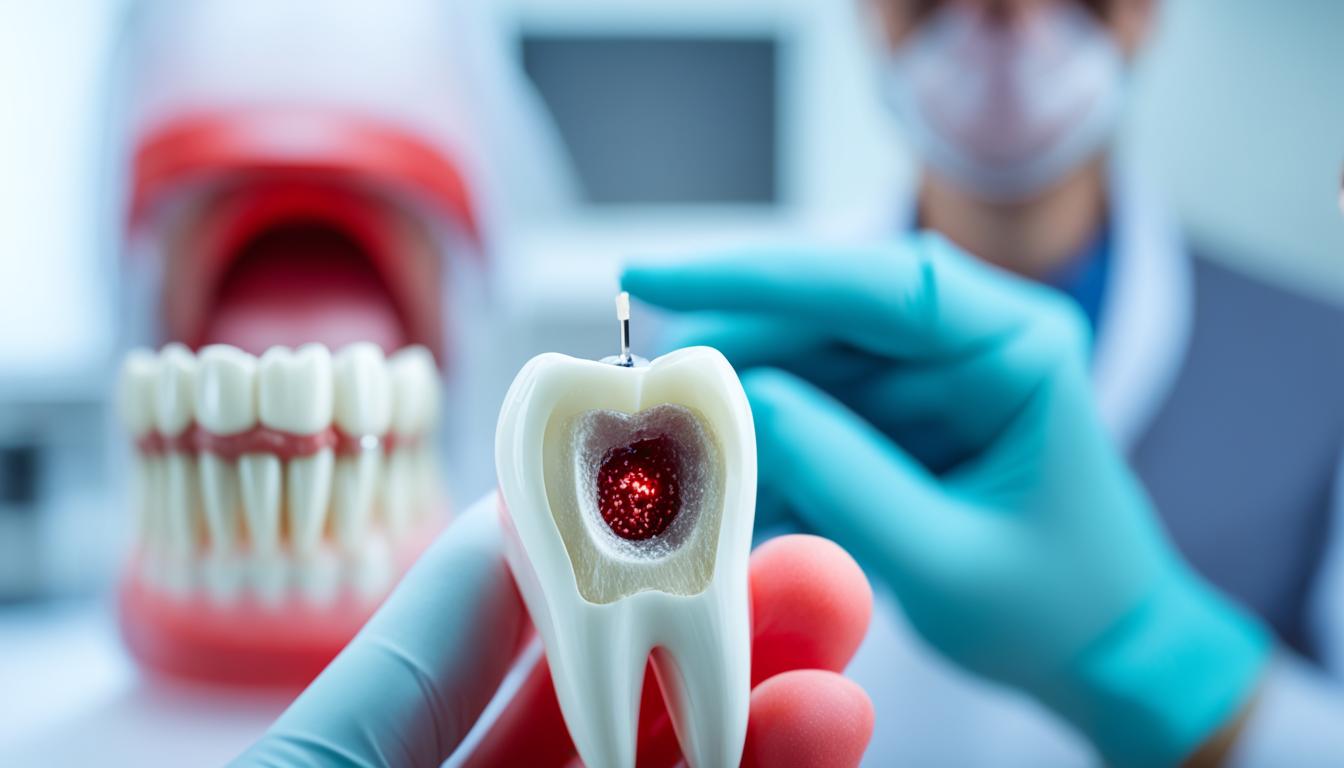Dry socket, also known as alveolar osteitis, is a common problem after getting a tooth pulled. It happens when a blood clot doesn’t form or gets dislodged. This condition can cause intense pain, spreading along the nerves and lasting for days.
Traumatic extraction, smoking, birth control pills, and infections before the procedure can make dry socket more likely. But the exact reason it happens is still not clear.
Doctors find dry socket by looking at the symptoms and checking the wound area. Treatment aims to reduce pain by cleaning the area, using anti-inflammatory drugs, and giving advice on home care.
Recently, using stem cell therapy to treat dry socket has become of interest. It focuses on healing the tissues and easing the pain. But, more studies need to be done to understand how effective this approach really is.
Key Takeaways:
- Dry socket, also known as alveolar osteitis, often occurs after tooth removal.
- It happens when a blood clot doesn’t form or falls out before the wound heals.
- The main sign is strong, spreading pain that can last for days.
- Risk factors include rough extractions, smoking, using birth control, and infections beforehand.
- Diagnosis involves looking at symptoms and examining the extraction area.
Symptoms and Causes of Dry Socket
Dry socket, known as alveolar osteitis, shows symptoms within the first three days after a tooth is removed.
Main Symptoms
- Dry Socket Symptoms: It causes a lot of pain. This pain can be really bad and spread across the nerves. You might also notice a bad smell or taste in your mouth.
- Delayed Healing: It slows down the healing process. The place where your tooth was removed heals slower than usual.
- Exposed Bone or Nerve Tissue: Sometimes, the bone or nerve can be seen in the gap left by the tooth removal. This can make the pain and discomfort even worse.
- Disappearing Blood Clot: If you look inside, there’s no blood clot, or it might have gone away. This blood clot should be there to help in the healing.
Potential Causes
The exact reason for dry socket is not clear. But, we know some things that make it more likely to happen:
| Key Causes |
|---|
| Dry Socket Causes: |
| Traumatic Extraction |
| Smoking or Tobacco Use |
| Contraceptive Use, particularly estrogen-based contraceptives |
| Pre-existing Infections in the extraction site |
To lower your risk of dry socket, you should practice good oral hygiene before and after the extraction. Follow the advice your dentist gives you after the tooth is taken out. Quitting smoking and talking to a doctor about contraceptives can also help.
Diagnosis and Treatment of Dry Socket
The diagnosis of dry socket comes from a patient’s symptoms and a close look at the extraction site. Dentists will check for things like exposed bone or nerve tissue, a missing blood clot, and slow healing. Sometimes, they’ll do extra tests like X-rays to be sure.
To treat dry socket, the main goals are to ease pain and help it heal right. Dentists will clean the socket and may put special dressings or gels on it for pain relief. They can also give pain medicine to make you more comfortable as you heal.
Patients will also get home care tips from their dentist. This might include rinsing with warm saltwater to keep the area clean. They’ll be told to avoid certain foods and activities that could slow down healing. It’s very important to follow all the advice given, go to your check-up visits, and keep in touch with your dentist.
Currently, stem cell therapy could be a promising future treatment for dry socket. But more studies are needed to see how well it works. Researchers and dentists are always looking for new and better ways to understand and treat dry socket.

